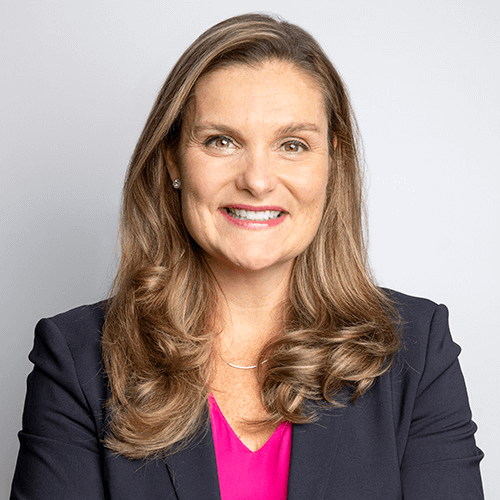Key Points:
- Disciplined investment decisions based on structural ESG opportunities and risks are sometimes being misinterpreted as value judgments by activist stakeholders.
- Focusing on material factors – such as human capital diversity in financial services – is likely to be more effective than seeking ever growing list of ESG data inputs.
- Evolving regulation brings discipline, but there is a need to harmonize requirements and avoid a tick-box approach to compliance.
- Collectives such as the Glasgow Financial Alliance for Net Zero (GFANZ), a coalition of financial institutions, have a key role to play in accelerating decarbonization.
What’s behind the politicization of ESG?
ESG is living through its “teenage growth spurt”, according to one expert on the panel at RBC Capital Markets’ Global Financial Institutions Conference in New York – and its growing pains are about to make their mark on organizations during this year’s annual general meeting (AGM) season.
Panel moderator Lindsay Patrick, Head of Strategic Initiatives and ESG at RBC Capital Markets, opened with a question on what she called “the elephant in the room” – the recent backlash against corporate and investment sustainability measures. With AGMs set to face both pro- and anti-ESG proposals from shareholders, Patrick invited the panel’s views on the politicization of ESG.
The development as “a very healthy reckoning” for the ESG space, in the view of Nikita Singhal, Managing Director and Co-Head of Sustainable Investment and ESG at Lazard Asset Management. However, she emphasized that ESG-based pricing decisions were not about “being woke” or “having a personal view of what’s good or bad in the world.”
Significant disruptions in industries – related to the energy transition, healthcare and living habits, or increased consciousness of workers’ rights – were creating catalysts for market pricing, Singhal said. The results affected not just the Teslas of the world, but entire supply chains: “It’s about being disciplined investors and recognizing there are structural trends we need to pay attention to.”
Eric Moen, Head of ESG and Climate at MSCI, agreed. He said much of the political noise was based on misconception.
“There are leaders and laggards in terms of how companies are managing their ESG risks – it doesn’t mean you should exclude the entire sector.”- Eric Moen, Head of ESG and Climate, MSCI
Suggesting the ESG industry has reached its teenage years, Singhal drew comparisons with the stage of the financial markets 70 years ago, before the establishment of the SEC. “We don’t have definitions or standardized frameworks and benchmarks – these things are going to take time as this space matures and evolves,” she added.
More ESG data is not always better
Meanwhile, there is “a deluge of data”, Singhal noted. She sympathized with companies which now must spend time and money completing multiple surveys with ESG information. “Is it helping us make better investment decisions? Not necessarily,” she declared. “More is not always better.”
She advocated applying a materiality lens to find those few environmental or social items that might translate into line items for a company’s revenue or growth projections.
Moen said MSCI’s modeling set out to assess the four to eight key items that might have a bearing on the competitiveness of companies in any industry. Where businesses did not provide this data themselves, the firm would model it. “ESG is about helping our clients build better investment portfolios.”
Singhal offered the example of a mining company that feared for its prospects of future investment, given the environmental and community impacts of the sector. However, one of its core products would be critical to the energy transition in the next few years: “The materiality is as much in the product benefits as in the operational risks.”
For financial institutions, she suggested, carbon footprint and other metrics were less critical than other social and governance factors.
“The most material aspect of a financial business is its human capital. The biggest risk we face is lack of diversity.”- Nikita Singhal, Manage Director and Co-Head of Sustainable Investment and ESG, Lazard Asset Management
When regulation is counter-productive
The panelists noted the tightening of regulatory regimes around ESG factors, especially focused on climate and in Europe. Moen said the three major pushes on ESG disclosures contained “some overlaps, but some distinct categories, which we’d like to see harmonized.”
Singhal said regulation brought some welcome discipline to the market. Returning to the analogy of ESG as a teenager, however, she said there was a risk of over-prescriptiveness and “stitching a suit that’s too tight to fit.”
The best coalitions to advance ESG
Patrick asked how financial institutions should go about deciding which coalitions to join in pursuit of collective action on ESG.
Moen said that while it was important to be selective, collective action was helping to set the direction of disclosure standards and to improve data frameworks.
He singled out GFANZ – the Glasgow Financial Alliance for Net Zero, a coalition of leading financial institutions committed to accelerating decarbonization. “We do feel it’s an important industry collective to help identify some of the best metrics to use in climate risk analysis,” he said.
Singhal said her criterion for joining collaborative organizations was their potential for sharing best practices. She praised the work of the CDP (formerly known as the Carbon Disclosure Project), which has created a global disclosure system over 20 years, and of the Sustainability Accounting Standards Board, which has been integrated into the International Sustainable Standards Board, and created the widely-used ‘materiality map’ identifying sustainability issues by industry.
“They’ve helped this industry go from infancy to teenage-hood,” she said.
All speakers agreed that the integration of ESG factors into financial and investment decision making was a trend that would persist for the foreseeable future, creating opportunities for financial sector participants to create competitive differentiation based on their approach.


